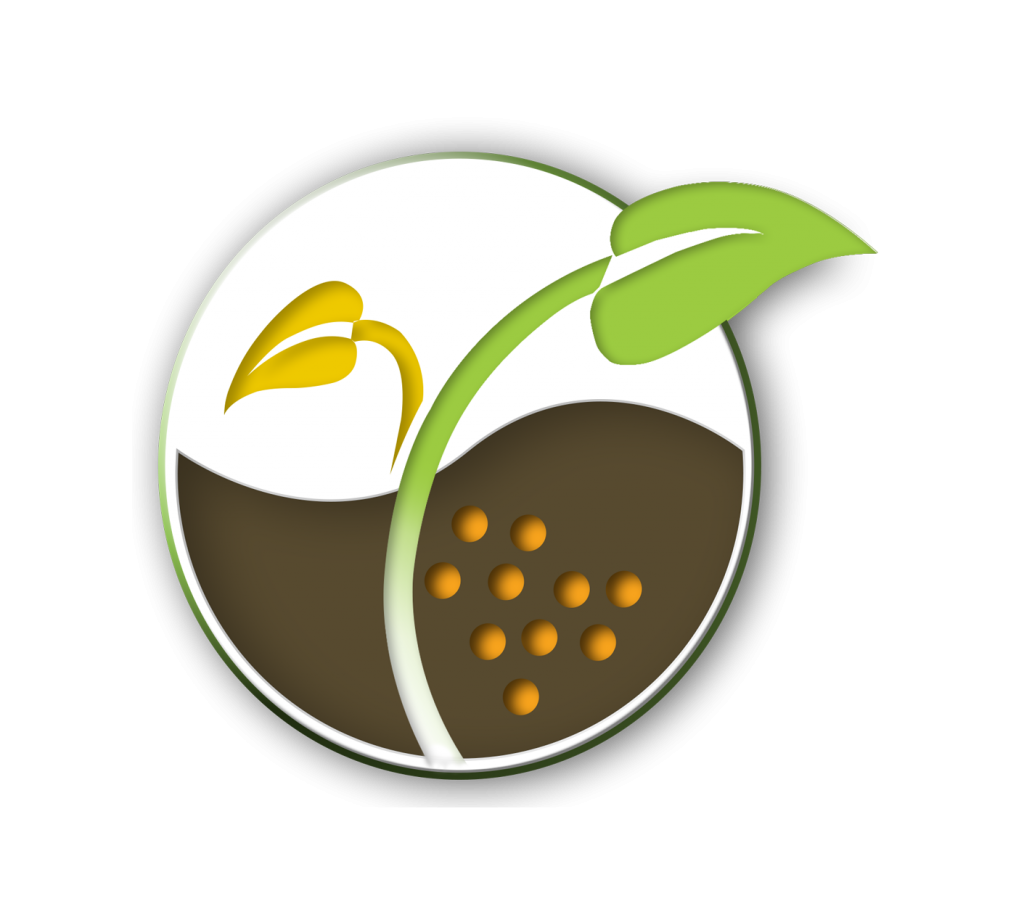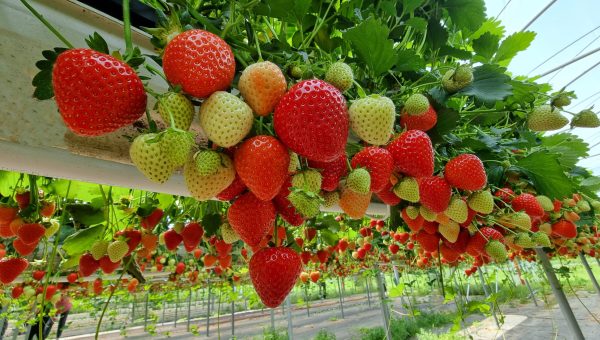Evaluating the Efficacy and Efficiency of Plant Protection Products:
Key Factors for Assessing the Impact and Performance of Biological Crop Protection Inputs.
Biological plant protection products, also known as biopesticides, are transforming modern agriculture by offering effective and sustainable solutions for pest and disease control. In response to the decreasing number of approved chemical active substances and the growing regulatory pressure within the European Union, farmers are turning to alternatives that ensure crop productivity without compromising environmental health.
In this context, biopesticides must not only meet the requirement of being more environmentally friendly, but also prove their field efficacy, safety for both applicators and consumers, and economic viability. The key lies in rigorous evaluation—ranging from their legal definition to GEP (Good Experimental Practices) trials and the demanding European phytosanitary registration processes.
In this blog, we explain the key aspects for evaluating the efficacy and efficiency of biological plant protection products, how they differ from biostimulants, the role of EPPO guidelines, and why relying on products authorized in Europe is a guarantee of proven results. A comprehensive approach to understanding how a product like T34 Biocontrol® is scientifically validated—and how its use can be confidently integrated into modern sustainable crop protection strategies.
In this new scenario, next-generation biopesticides—formulated with specific microorganisms—are emerging as solid alternatives to conventional chemical treatments. However, transitioning to new management strategies can understandably raise questions: Do they really work? How is their efficacy measured? What guarantees do they offer? This post aims to answer those questions, offering a rigorous, evidence-based perspective on how biological plant protection products are scientifically evaluated.
Important: This blog focuses on the evaluation of biopesticide efficacy. In the second part, we’ll delve deeper into the approval of active substances, their regulation at the European level, and their role in biological plant protection products.
1. What is the difference between a biological plant protection input and a biostimulant input or product?
In professional agriculture, understanding the difference between a biological plant protection product and a biostimulant is essential for making safe and effective decisions in crop management.
Both may contain similar ingredients, such as certain beneficial microorganisms, but their purpose, regulation, and mode of action are entirely different.
They are regulated under Regulation (EU) 1107/2009 and are used to protect plants against pests, diseases, or weeds. Their commercialization requires prior authorization based on rigorous trials that demonstrate:
– The Efficacy under field conditions.
– Safety for the applicator, the consumer, and the environment.
– The ability to control specific harmful organisms, supported by verified data.
Unlike biostimulants, they can legally claim pest or disease control properties. This prevents confusion and protects farmers from investing in solutions whose effectiveness against pathogens is not scientifically validated.
Regulated under Regulation (EU) 2019/1009, they are classified as fertilising products.
Their commercialization does not require efficacy-based authorization, and their purpose is to improve:
– Plant vigor and growth development.
– Nutrient uptake.
– Plant resilience to abiotic stress (such as drought or salinity).
Unlike plant protection products, they cannot legally claim pest or disease control properties, even if they contain similar microorganisms. This prevents confusion and protects farmers from investing in solutions whose effectiveness against pathogens is not scientifically proven.
Regulatory Comparison: Plant Protection Products vs. Biostimulants
| Aspect |
Biological Plant Protection Products (EU Regulation 1107/2009) |
Biostimulants (EU Regulation 2019/1009) |
|---|---|---|
| Product Purpose |
Direct control of pests, diseases, or weeds | Stimulation of plant growth, improved nutrient uptake, etc. |
| Legal Category |
Plant protection product | Fertilising product (functional category: biostimulant) |
| Required Evidence |
Efficacy trials, toxicology, ecotoxicology, residue analysis, etc. | Functionality tests (e.g., improved yield, stress tolerance) |
| Scientific Evaluation |
EFSA + national authorities (harmonized procedure) | Manufacturer self-declaration + compliance with technical requirements |
| Authorization |
Centralized or zonal (required before commercialization) | Conformity assessment (notified body) + CE marking |
| Labeling and Permitted Claims |
May include pest or disease control claims if approved | Cannot include any claims related to pest or disease control |
| Permitted Microorganisms |
Only if evaluated and approved as an active substance | Azotobacter spp., Rhizobium spp., Azospirillum spp., mycorrhizal fungi |
Figure 1. Regulatory comparison between biological plant protection products and biostimulants under European legislation. Key differences include product purpose, evaluation and authorization requirements, and the permitted use of microorganisms.
Why is it crucial not to confuse them?
The responsible use of agricultural products starts with understanding their legal and technical function. Only authorized biological plant protection products have scientifically proven their efficacy in controlling specific diseases or pests.
Using a biostimulant as if it were a plant protection product can pose both legal and agronomic risks.
2. What does it mean for a biological plant protection product to be effective?
In agriculture, the efficacy of a biological plant protection product is not measured by marketing claims or anecdotal impressions, but by its proven ability to control a pest or disease under real field conditions.

According to the Diccionario de la lengua española of the Royal Spanish Academy (RAE), the definition of efficacy is:
Efficacy
From Latin efficacia.
1. f. The ability to achieve the desired or expected effect.
A product is considered effective when it achieves a significant reduction in:
INCIDENCE
The incidence of the disease (number of affected plants).

SEVERITY
The severity of symptoms (extent of damage to the plants).

These metrics are always compared to an untreated control group, which serves as a reference to assess the actual effect of the product, as well as to reference treatments—chemical or biological—that are commercially available and commonly used to control the same pest or disease.
In most trials, three different doses of the product under study are typically evaluated. This allows for the analysis not only of its efficacy but also of the efficiency of each dose. The goal of this comparison is to identify the most cost-effective dose, prioritizing a solution that is both viable and profitable for the farmer.

How Is Efficacy Measured? Official Field Trials
To validate a biological or conventional plant protection product, field efficacy trials are conducted in accordance with recognized standards, such as Good Experimental Practices (GEP). These studies follow strict scientific and statistical criteria to ensure that the results:

Are objective and reproducible.

Under real agronomic conditions.

Allow for comparison with other available solutions.

Common Efficacy Indicators:
Phytotoxicity: Potential Adverse Effects
Disease Index: % of Affected Plants
Disease Incidence Reduction Compared to the Control
Severity Reduction in Visible Symptoms
Yield: Production (Kg/Ha), Quality
Beyond Visual Perception:
A product is not considered effective just because it “seems to work.” It must demonstrate, with solid data, that:
- The control is consistent.
- The improvement is statistically significant.
- It can be successfully used into integrated pest and disease management strategies.
In summary, an effective biological plant protection product is not a promise, but a scientific guarantee based on evidence. That is why only authorized products that have undergone this process can offer trust and real results to the farmer.
3. How is a Biological Plant Protection Product Registered in Europe?
The registration of a biological plant protection product in the European Union is a rigorous technical and regulatory process that ensures only effective, safe, and sustainable solutions reach the agricultural market.
Unlike other inputs, these products must undergo thorough scientific evaluations that validate their efficacy against specific pests or diseases, as well as their safety for human health, the environment, and crops.
Step 1: Active Substance Evaluation
The first step is the approval of the active substance (e.g., a microorganism like Trichoderma asperellum) at the European level, in accordance with Regulation (EU) 1107/2009. This evaluation is carried out by the EFSA (European Food Safety Authority) and member states, and focuses on:
Toxicological and Ecotoxicological Profile

Stability and Mode of Action¡

Absence of Unacceptable Risks

Important: This approval does not authorize direct commercial use. It only validates the active substance at the European level.
The next blog will cover this topic in depth.
Step 2: Formulated Product Evaluation
Once the active substance is approved, the efficacy of the formulated product containing it must be registered. This means efficacy studies must be conducted against each specific pathogen and crop. This process is carried out at the national or zonal level, depending on the country where the product is intended for commercialization.
A complete technical dossier must be submitted, which includes:
- Efficacy trials under real conditions (following GEP standards).
- Risk assessment for humans, beneficial fauna, and the environment.
- Residue studies, soil behavior, compatibilities, etc.
Climatic Zones and Zonal Evaluation:
To adapt the evaluation of plant protection products to real field conditions, Europe has been divided into three major agroclimatic zones, also known as EPPO Climatic Zones. This division responds to the need to reflect the variability in climate, crops, and agricultural practices within the efficacy evaluation process.
The three main zones defined are:
| Zone | Examples of Countries | Characteristics |
|---|---|---|
| North | Scandinavia, Baltic States, Ireland | Cold climates, low disease pressure |
| Central Europe | Germany, France, Netherlands, Poland… | Temperate climate, both extensive and intensive crops |
| Southern Europe | Spain, Italy, Greece, Portugal | Warm climates, high pest pressure, both intensive and extensive crops |

Each zone may have a zonal rapporteur member state (zRMS) that leads the evaluation. If the zRMS approves the product’s efficacy trials, other countries in the zone can accept it through mutual recognition.
Summary of the Registration Process
| Stage | Level | Responsible | Objective |
|---|---|---|---|
| Active Substance | European | EFSA + Member States | Approve the active substance |
| Formulated Product | National or Zonal | Member State / zRMS | Authorize commercial use |
| Final Authorization | Country by Country | National Authorities | Define crops, doses, conditions |
Why is this process important?
Because only a registered product can guarantee real results, safety and traceability. It is the only way to protect the farmer against non-validated solutions and ensure that the use of the product is:
- Effective against a specific pathogen, in the target crop and zone.
- Compatible with the principles of sustainable agriculture.
- Safe for the environment and the food chain.
4. GEP Trials:
The scientific basis of efficacy in biological plant protection products.
When discussing the validation of a biological plant protection product, GEP (Good Experimental Practices) trials are the reference standard in Europe. They are essential to objectively and reproducibly demonstrate that the product truly works under agricultural use conditions.
GEP trials are field or greenhouse studies designed under strict scientific and regulatory criteria. They are regulated by European guidelines, such as those from EPPO (European and Mediterranean Plant Protection Organization), and can only be conducted by authorized and accredited companies.
These studies allow for:
- Measure the actual efficacy of a product against specific diseases or pests.
- Compare it with reference products (chemical or biological).
- Validate its use under different agronomic conditions.
GEP (Good Experimental Practice)
A set of standards and guidelines that ensure the quality, reliability, and reproducibility of efficacy trials for plant protection products. These trials must be conducted following standardized protocols, under controlled conditions, and with rigorous documentation, to ensure that the data generated is valid for the product registration process with the competent authorities.
In Europe, these practices are regulated under Directive 91/414/EEC and its updates, and they are a mandatory requirement for the efficacy results to be accepted in the plant protection product authorization dossiers.

Source: SGS Field Studies
How are GEP Trials Designed?
A properly executed GEP (Good Experimental Practice) trial is based on a rigorous experimental design that ensures the scientific validity of the results. This includes plots treated with different doses of the product under evaluation—often three levels—along with an untreated control group and reference treatments already authorized in the market, both chemical and biological. The goal is to determine the minimum effective dose with an optimal cost-benefit ratio.
The experimental design must incorporate statistical principles such as randomization, replication, and appropriate statistical analysis to ensure the reproducibility and significance of the data. The entire process is thoroughly documented, covering everything from planting to harvest, with detailed records of crop development, disease incidence and severity, agronomic performance parameters, and any potential phytotoxic effects attributable to the treatment.
- Treated and untreated plots (control).
- Variable doses to define the minimum effective dose.
- Reference treatments already authorized on the market.
- Robust statistical design: replication, randomization, and data analysis.
GEP trials are the scientific evidence required by authorities to authorize a plant protection product. They ensure that:
- Efficacy is not anecdotal, but replicable.
- The recommended dose is the most efficient from a technical, economic, and environmental perspective.
- The product meets the quality and safety standards required in Europe.
In conclusion, GEP trials are the guarantee that a biological plant protection product truly works. Without them, it is not possible to obtain official registration or offer security to the farmer.
5. Efficacy and Efficiency in Plant Protection Products
What do we mean by efficiency?
When evaluating a biological plant protection product, it is not enough to simply demonstrate that it is effective against a pest or disease. It must also be efficient: that is, it should provide a technically sound solution that is cost-effective for the farmer and environmentally friendly.

According to the Diccionario de la lengua española by the Royal Spanish Academy (RAE), the definition of efficiency is:
Efficiency
From Latin efficientia.
1. f. The ability to utilize someone or something to achieve a specific effect.
2. f. The ability to achieve the desired results with minimal use of resources.
La eficiencia combina varios factores:
- Minimum Effective Dose: The exact amount of product needed to achieve the desired level of control.
- Cost-Benefit Ratio: The treatment must justify its investment with measurable agronomic results (e.g., production, quality, plant health).
- Reduction of Environmental Impact: Avoiding overdosing, residues, and unnecessary risks to ecosystems.
A product can be effective, but if it requires high doses or generates disproportionate costs, it will not be viable in professional agricultural practice.
How is efficiency measured in GEP trials?
During efficacy trials, the following is also evaluated:
- Crop Response to Different Doses
- Agricultural Yield (kg/ha, commercial quality)
- Phytotoxicity or Potential Negative Effects of the Product
This allows for the identification of:
- The optimal dose, with the best balance between efficacy, cost, and sustainability.
- The most appropriate application strategy (frequency, timing, compatibility with other products).
1. Crop Response to Different Doses
1. Crop Response to Different Doses
2. Agricultural Yield
2. Agricultural Yield as a Key Indicator
3. Evaluation of Phytotoxicity
3. Evaluation of Phytotoxicity and Absence of Negative Effects on the Crop
5. Conclusions.
Why Trust in Registered Biological Plant Protection Products is a Sound Strategic Decision
European agriculture is undergoing a major transformation. Regulatory demands, consumer expectations, and environmental challenges require solutions that are both effective, safe, and sustainable. In this scenario, biological plant protection products are positioned as key tools, but only if they have been scientifically validated and authorized according to the current regulations.
In a regulated, safe, and demanding agricultural context, biological plant protection products represent a key solution for achieving effective, safe, and sustainable plant protection. However, their real value is only confirmed once they have passed a rigorous technical and legal evaluation process.
This process includes efficacy trials under GEP standards, safety studies for the applicator, consumer, and the environment, and regulatory validation in accordance with Regulation (EU) 1107/2009. All of this ensures that the product not only works effectively but does so with solid scientific backing and under real agricultural use conditions.
Opting for registered products means choosing validated tools, whose efficacy has been proven, whose optimal dose has been defined, and whose use is compatible with the professional farmer’s goals of profitability, traceability, and sustainability.
Therefore, trusting authorized biological plant protection products is not only a responsible choice but a professional strategy based on evidence. Because when a product is verified, validated, and proven, there’s no doubt: it works.





